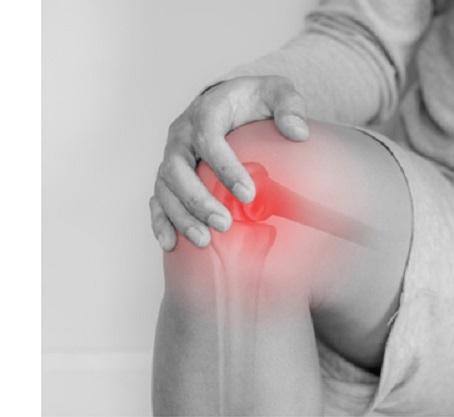
There’s a deep body of research to document the connection between amputation and osteoarthritis. Studies dating all the way back to the 1970s show that single-leg amputees run an elevated risk of developing osteoarthritis in the knee of their intact leg. However, prior research was too narrow in scope to yield generalizable conclusions about the connection between limb loss and arthritis. For example, a 1994 study found that elderly amputees are about 60 percent more likely to develop osteoarthritis than able-bodied seniors, but that study’s subjects were all at least 80 years old and had all used prosthetic limbs for more than 30 years. Other studies have emphasized the connection between post-amputation weight gain and arthritis, hypothesizing that inactivity weakens the muscles and bones and thereby increases stress on the knee joint. Yet another study focused on unusually active amputees who were heavily involved in running and other sports that inflicted wear and tear on their bodies.
A new paper in the Journal of Orthopaedic Research argues that the root cause is something that affects nearly every amputee: gait change. If amputees unconsciously shift more of the weight and force of day-to-day walking onto their intact limb, the authors hypothesized, those effects would be expected to increase the incidence of osteoarthritis over time.
To test this theory, the researchers conducted complex gait analysis of 11 below-knee amputees and compared the results to gait measurements from a comparable number of able-bodied individuals. “This study has found that forces on both medial and lateral knee compartments of the intact knee are higher than for the control group,” they write. “This may explain the higher risk of contralateral knee pain and [osteoarthritis] reported for the [transtibial amputees].”
All the amputee subjects were young (between 23 and 35 years old), healthy, and physically active. They all used state-of-the-art prosthetic ankles and feet that offer strong biomechanical support and minimize gait disruptions. All but two subjects were at least a year post-amputation, and the median duration was 20 months post-amputation. The amputee subjects walked the same distance at the same speed as the able-bodied subjects, yielding an apples-to-apples comparison of the biomechanical forces.
Without getting too deep into the weeds, the study found subtle but clear evidence that the amputee subjects placed added stress on their intact limbs during regular walking. For example, the amputee subjects placed heavier loads on the medial portion of their intact knee, compared to the control group. The medial portion is the half that’s closest to the centerline of your body, and therefore it carries more of the burden than the anterior (or outside) half of the joint. These heavier loads were observed in both the initial contact gait phase (when the opposite leg is trailing behind and still bearing a bit of the weight) and the stance phase (when the opposite leg is swinging forward and bearing no weight at all).
A second key finding was that the intact limb spent slightly more time in the stance phase than the limbs with amputation, and correspondingly less time in the swing phase. The differences were measured in microseconds, but those tiny increments add up over a lifetime. Finally, the study found that the amputee subjects bent their intact limbs more acutely than their amputated limbs during each stride, whereas the control subjects bent both legs at identical angles.
The authors conclude by calling for mitigation strategies to compensate for the higher stress that’s placed on the intact limb. Greater prosthetic foot control and socket design could help, they suggest. So might physical therapy and/or gait therapy that’s designed to strengthen the muscles in the amputated limb so they can bear more weight and reduce the tendency to shift burdens to the intact limb.
“This study has for the first time provided robust evidence of increased force on the non-affected knees of high functioning [transtibial amputees],” the paper concludes. “[This] supports the mechanically based hypothesis to explain the documented higher risk of knee OA in this patient group.”


